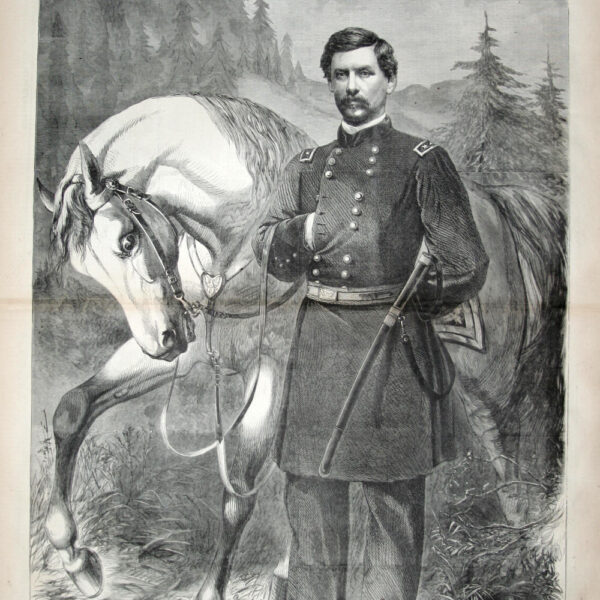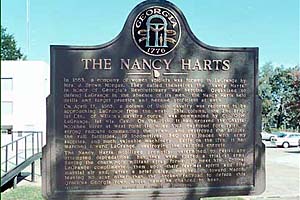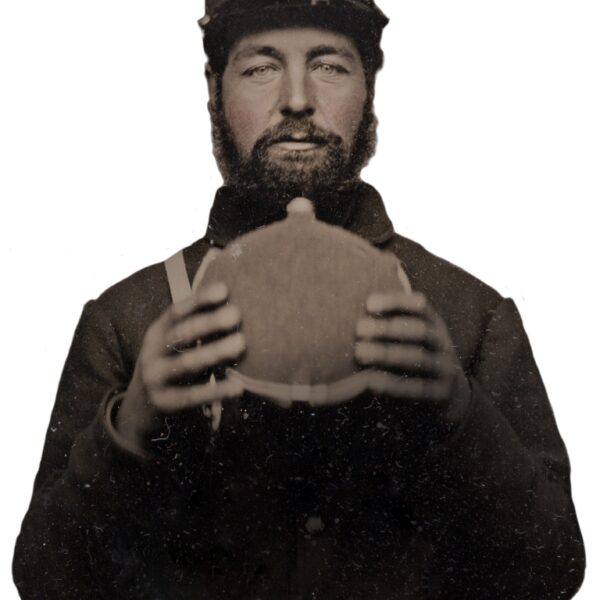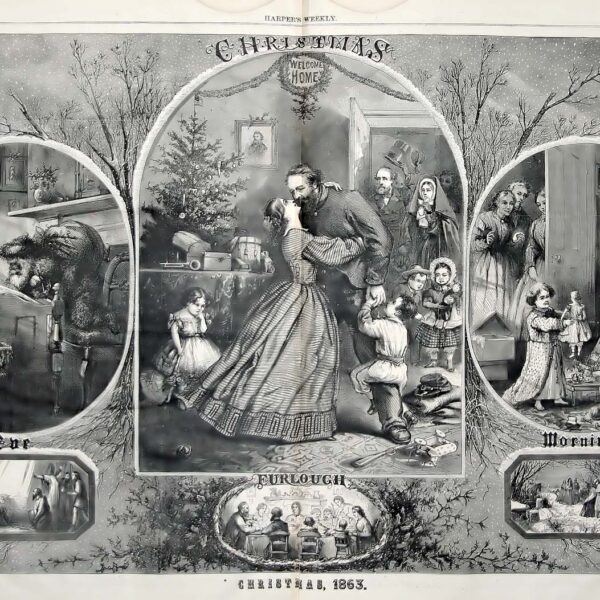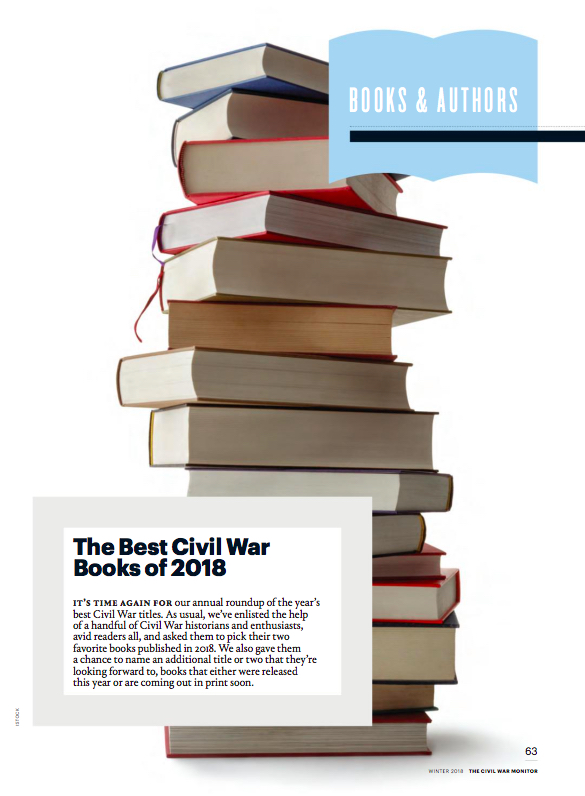
The Books & Authors section of our Winter 2018 issue contains our annual roundup of the year’s best Civil War titles. As usual, we enlisted the help of a handful of Civil War historians and enthusiasts, avid readers all, and asked them to pick their two favorite books published in 2018. Below are their picks.
We also gave them a chance to name an additional title or two that they’re looking forward to, books that either were released this year or are coming out in print soon. Check those out in the issue.
A. Wilson Greene
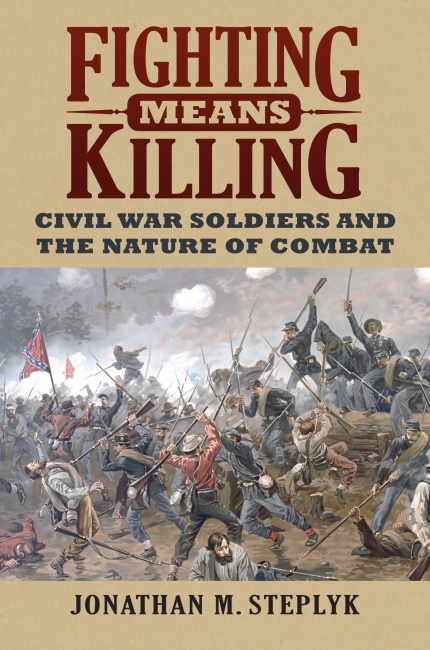
Top Pick: I lead tours on Civil War battlefields all across the country and know too well how strategy, operations, and tactical decisions tend to dominate my narratives. Jonathan M. Steplyk’s innovative and entirely original new book, Fighting Means Killing: Civil War Soldiers and the Nature of Combat (University Press of Kansas), has reminded me that Civil War battlefields are, at their root, all about the ugly business of countrymen killing countrymen. Steplyk has employed extensive research in primary sources to offer insights into how citizen soldiers reacted and adapted to the reality of deadly combat in all of its Civil War forms. Soldiers dispatched each other in a variety of ways—sharpshooting, hand-to-hand encounters, and the more typical experience of near-anonymous general combat. There were massacres as well as acts of battlefield mercy. This is simply a brilliant book, and after reading it, I wondered why no one had tackled such an important topic years ago. Fighting Means Killing bridges the gap between the military and social history of the war and explains better than anything I’ve previously read how and why a quarter of a million Americans died at the hands of their domestic enemies.
Honorable Mention: I would have highly recommended Petersburg to Appomattox: The End of the War in Virginia (University of North Carolina Press), a collection of nine essays edited by Caroline E. Janney, even if my personal focus was not on the Petersburg Campaign and its consequences. Janney has picked up where her mentor, Gary W. Gallagher, left off in editing thoughtful and original scholarship on a variety of topics. Among the contributors to this volume, which deals with the closing chapter of the war in the East, are many of our field’s leading historians, including Peter Carmichael, who writes about the Battle of Five Forks, and Elizabeth Varon, who reviews African Americans’ perspectives on Robert E. Lee’s surrender. There is not a weak entry in this must-read anthology.
A. WILSON GREENE RETIRED FROM A 44-YEAR CAREER IN PUBLIC HISTORY IN 2017. HIS MOST RECENT BOOK, A CAMPAIGN OF GIANTS: THE BATTLE FOR PETERSBURG (UNIVERSITY OF NORTH CAROLINA PRESS), IS THE FIRST OF THREE PROJECTED VOLUMES ON THE PETERSBURG CAMPAIGN.
Harry Smeltzer
Top Pick: My choice for the “best” Civil War book of 2018 is not a traditional narrative, but a four-volume set of rosters for the regiments of George “Tige” Anderson’s brigade—the 7th, 8th, 9th, and 11th Georgia Infantry—compiled by Richard Michael Allen (Savas Beatie). The result of many years of painstaking research, these volumes equate to about 5,000 mini-biographies, which are alternately heart-wrenching and surprising. In addition to the books’ substantial value as a database, this work is representative of the new “tip of the spear” of Civil War research, driven by individuals with low-cost access to increasing volumes of material and the time to process it all. It remains to be seen whether this type of scholarship will be financially rewarding to the authors or publishers, but it is certainly priceless to the rest of us.
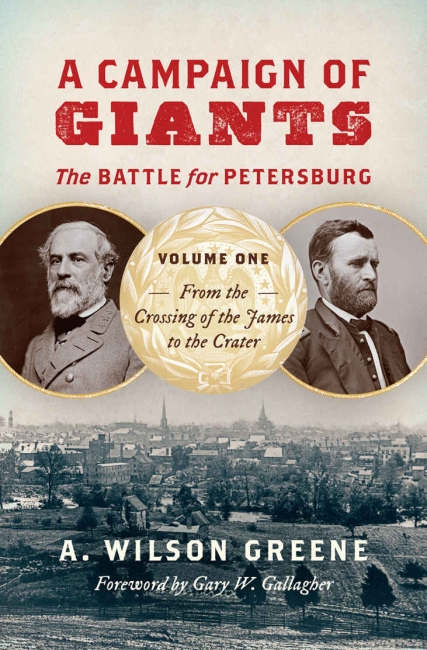
Honorable Mention: The first book of A. Wilson Greene’s planned three-volume study of the Petersburg Campaign, A Campaign of Giants: The Battle for Petersburg, Volume One: From the Crossing of the James to the Crater (University of North Carolina Press), is an impressive achievement. The operations around Petersburg are staggering in their volume and complexity, and few have studied them as closely or for as long as Greene. I’m already eager for the third volume to see if the action at Fort Mahone during the Breakthrough (where my great-grandfather was wounded) gets the attention it has lacked.
HARRY SMELTZER IS THE HOST OF THE WEBSITE BULL RUNNINGS (BULLRUNNINGS.WORDPRESS.COM), THE AUTHOR OF NUMEROUS CIVIL WAR ARTICLES AND BOOK REVIEWS, A FREQUENT PRESENTER AT CIVIL WAR ROUNDTABLES, AND A MEMBER OF THE BOARD OF DIRECTORS OF THE SAVE HISTORIC ANTIETAM FOUNDATION.
Thomas E. Barber
Top Pick: Erik Mathisen’s The Loyal Republic: Traitors, Slaves, and the Remaking of Citizenship in Civil War America (University of North Carolina Press) took me by surprise this year with its focus on political fidelity. In Mathisen’s telling the Civil War shattered the antebellum consensus that citizenship was reserved for white men only. Using the Mississippi Valley as his focal point, Mathisen charts how loyalty, or disloyalty, to the state became the litmus test for American citizenship. During the war, the Confederacy worked tirelessly to wrangle loyalties away from local militias, while the Union used disloyalty as an excuse to censor the press and individuals, as when Major General Benjamin Butler had Confederate sympathizer William Mumford executed for removing the U.S. flag from a public building in New Orleans in June 1862. Moreover, wartime loyalties transformed into postwar rights. African Americans used wartime service as a foundation for securing political, property, and familial rights. White southerners saw the opposite happen—loyalty to the Confederate state resulted in weaker claims to national citizenship and property rights. Concisely written, The Loyal Republic is well worth your time.
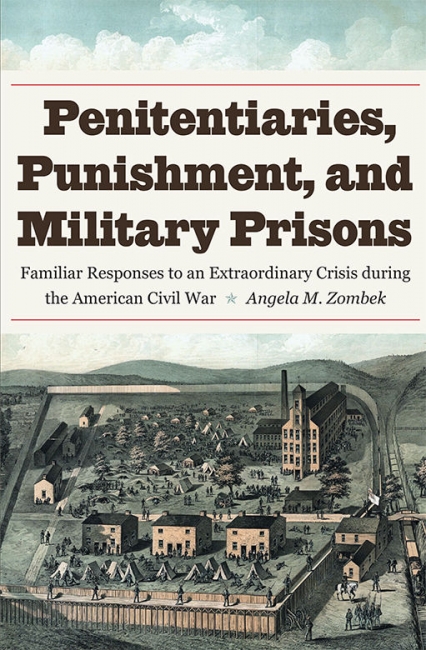
Honorable Mention: Prisons remain an understudied topic in Civil War studies. In Penitentiaries, Punishments, and Military Prisons: Familiar Responses to an Extraordinary Crisis During the American Civil War (Kent State University Press), Angela M. Zombek compares wartime prisons to their antebellum forebears and their postwar progeny. In doing so, she demonstrates that penitentiaries and military prisons, before and after the war, were far more alike than they were different. Military prisons sought to create loyal subjects just as penitentiaries and military prisons, before and after the war, were far more alike than they were different. Military prisons sought to create loyal subjects just as penitentiaries tried to create productive citizens. This insight is important because it reminds us that for all of the change wrought by the Civil War, many facets of American life remained constant.
THOMAS E. BARBER IS EDITOR OF CIVIL WAR BOOK REVIEW (DIGITALCOMMONS.LSU.EDU/CWBR/) AND A GRADUATE STUDENT AT LOUISIANA STATE UNIVERSITY. HIS DISSERTATION, “THE VALUE OF BENEVOLENCE: PATRONAGE, PHILANTHROPY, AND POLICE POWER BEFORE THE CIVIL WAR,” EXAMINES HOW CHARITABLE ACTION BECAME INTERTWINED WITH STATE POWER.
Kevin M. Levin
Top Pick: In June 2015 Dylann Roof murdered nine African Americans during a Bible study at the Emanuel African Methodist Episcopal Church in Charleston, South Carolina. Since then the country has been embroiled in a contentious debate about the public display of Confederate flags and monuments and the 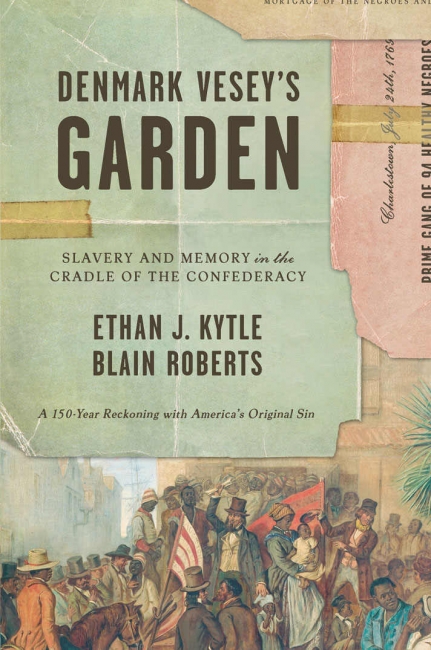 broader question of how the Civil War should be remembered and commemorated. Denmark Vesey’s Garden: Slavery and Memory in the Cradle of the Confederacy (The New Press) by Ethan J. Kytle and Blain Roberts is the perfect book for anyone interested in better understanding the historical roots of this debate. The authors demonstrate that the battle over Civil War memory has always been contentious. The African-American community in Charleston, for example, protested the dedication of the John C. Calhoun monument in 1892 in Marion Square even as its members held tight to their own memory of the war that was centered on emancipation and their service in the Union army. On the other side of the racial divide, the dedication of new monuments and other forms of Confederate memory was never far removed from concerns surrounding the maintenance of white supremacy following Reconstruction and through the Jim Crow era. Kytle and Roberts bring their story right up to the 2015 murders. In doing so they have produced a book that is both timely and helpful in pulling back the many layers of what Americans have chosen to remember and forget about the Civil War and the history of slavery. This book is a must-read.
broader question of how the Civil War should be remembered and commemorated. Denmark Vesey’s Garden: Slavery and Memory in the Cradle of the Confederacy (The New Press) by Ethan J. Kytle and Blain Roberts is the perfect book for anyone interested in better understanding the historical roots of this debate. The authors demonstrate that the battle over Civil War memory has always been contentious. The African-American community in Charleston, for example, protested the dedication of the John C. Calhoun monument in 1892 in Marion Square even as its members held tight to their own memory of the war that was centered on emancipation and their service in the Union army. On the other side of the racial divide, the dedication of new monuments and other forms of Confederate memory was never far removed from concerns surrounding the maintenance of white supremacy following Reconstruction and through the Jim Crow era. Kytle and Roberts bring their story right up to the 2015 murders. In doing so they have produced a book that is both timely and helpful in pulling back the many layers of what Americans have chosen to remember and forget about the Civil War and the history of slavery. This book is a must-read.
Honorable Mention: A. Wilson Greene is the undisputed authority on the Petersburg Campaign. His new book, A Campaign of Giants, clocks in at roughly 700 pages and is the first of a planned three-volume series. Greene offers detailed coverage of this first stage of the campaign, from the crossing of the James River to the Battle of the Crater, which will satisfy any military enthusiast. At the same time the book explores how the campaign impacted the residents of the city of Petersburg, the political decisions made on both sides, and the overall course of the war. This is how military history should be written.
KEVIN M. LEVIN IS THE AUTHOR OF REMEMBERING THE BATTLE OF THE CRATER: WAR AS MURDER (UNIVERSITY PRESS OF KENTUCKY, 2012) AND EDITOR OF INTERPRETING THE CIVIL WAR AT MUSEUMS AND HISTORIC SITES (ROWMAN & LITTLEFIELD, 2017). THE UNIVERSITY OF NORTH CAROLINA PRESS WILL PUBLISH HIS NEXT BOOK, SEARCHING FOR BLACK CONFEDERATES: THE CIVIL WAR’S MOST PERSISTENT MYTH, IN 2019. YOU CAN FIND HIM ONLINE AT CIVIL WAR MEMORY (CWMEMORY.COM).
Brian Matthew Jordan
Top Pick: In The Field of Blood: Violence in Congress and the Road to Civil War (Farrar, Straus, and Giroux), Joanne B. Freeman—an accomplished historian of early U.S. politics and political culture—fixes her gaze on Congress in the three decades before the Civil War. By Freeman’s accounting, this period witnessed “more than seventy violent incidents between congressmen in the House and Senate chambers.” Revealing the canons and cadence of antebellum 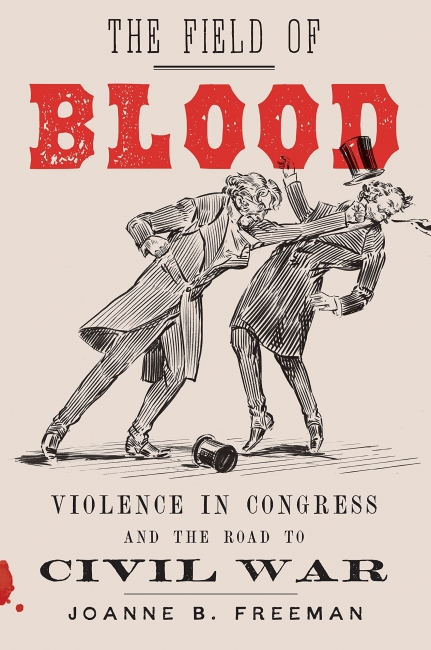 political combat, she explains anew the “emotional logic of disunion.” Southern “words, deeds, and fists” intimidated congressmen from north of the Mason-Dixon for years. But in the mid-1850s—newly encouraged by their incensed constituents back home—members of the Republican Party determined to confront the “Slave Power” directly. Federal lawmakers armed themselves with weapons and Bowie knives, bracing for open violence. Teeming with three-dimensional characters rendered in vivid human color, Freeman’s carefully drawn history allows us to see the oft-rehearsed political crises of the 1850s “as they were lived.” The book does not—as J.G. Randall and the “revisionist” historians of the early 20th century did—accuse politicians of starting the Civil War. Quite to the contrary, it suggests that what happened in the halls of Congress reflected the culture of fear, conspiracy, and “distrust” that tore the Union apart. Informed by deep research, this is a vital, timely, and sobering reminder of the costs of political brinksmanship.
political combat, she explains anew the “emotional logic of disunion.” Southern “words, deeds, and fists” intimidated congressmen from north of the Mason-Dixon for years. But in the mid-1850s—newly encouraged by their incensed constituents back home—members of the Republican Party determined to confront the “Slave Power” directly. Federal lawmakers armed themselves with weapons and Bowie knives, bracing for open violence. Teeming with three-dimensional characters rendered in vivid human color, Freeman’s carefully drawn history allows us to see the oft-rehearsed political crises of the 1850s “as they were lived.” The book does not—as J.G. Randall and the “revisionist” historians of the early 20th century did—accuse politicians of starting the Civil War. Quite to the contrary, it suggests that what happened in the halls of Congress reflected the culture of fear, conspiracy, and “distrust” that tore the Union apart. Informed by deep research, this is a vital, timely, and sobering reminder of the costs of political brinksmanship.
Honorable Mention: Greene’s A Campaign of Giants is the most important operational history of a Civil War military campaign to appear in at least a decade. Informed by the author’s impressive research (the notes and bibliography extend nearly 200 pages) and intimate knowledge of the ground (he spent many years as director of Pamplin Historical Park), this study takes readers from the crossing of the James through the July 1864 Battle of the Crater. The narrative supplies keen assessments of leadership and command decisions on both sides, but it never loses sight of the ordinary foot soldiers who endured this intricate and complex campaign. Enlivened with compelling anecdotes and illustrated with Edward Alexander’s easy-to-follow maps, this volume makes a major contribution to the literature on the war’s eastern theater.
BRIAN MATTHEW JORDAN IS ASSISTANT PROFESSOR OF CIVIL WAR HISTORY AND DIRECTOR OF GRADUATE STUDIES IN HISTORY AT SAM HOUSTON STATE UNIVERSITY. HE IS THE AUTHOR OF MARCHING HOME: UNION VETERANS AND THEIR UNENDING CIVIL WAR (LIVERIGHT PUBLISHING CORPORATION), WHICH WAS A FINALIST FOR THE 2016 PULITZER PRIZE IN HISTORY. HIS LATEST EFFORT, ENDURING WAR: LIFE, DEATH, AND SURVIVAL IN A UNION REGIMENT IS EXPECTED IN 2020.

